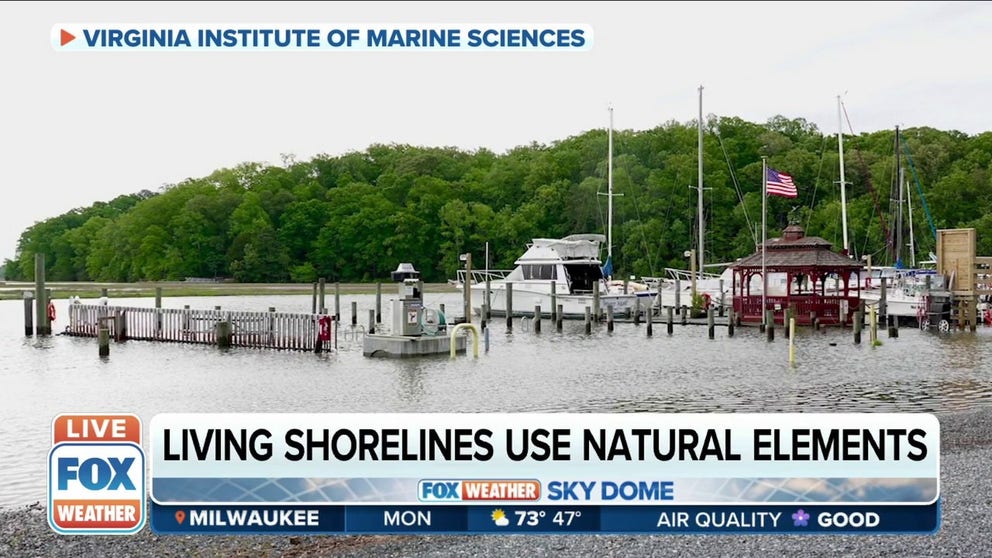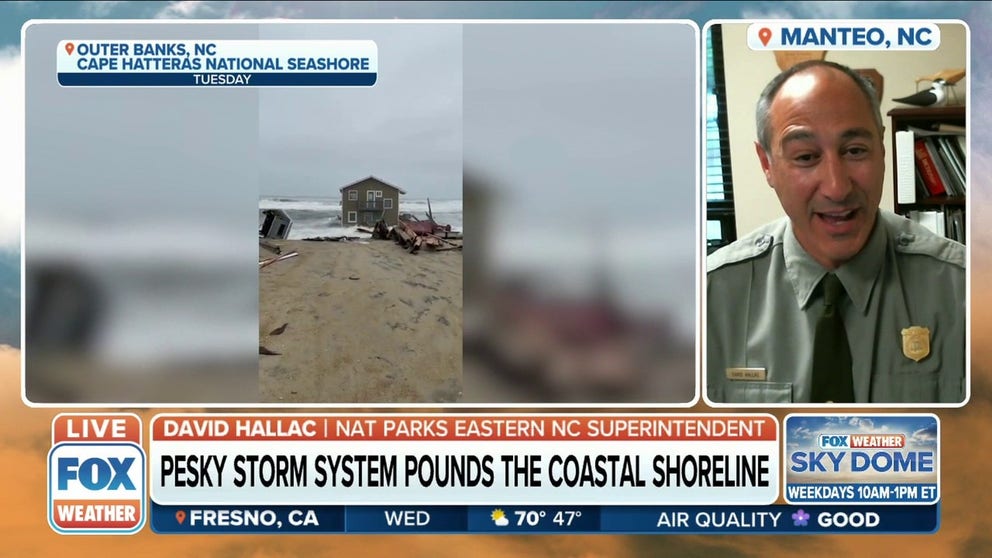Living shorelines provide alternatives to protecting homes from erosion, flooding but comes at a cost
Virginia law requires landowners to install living shorelines when coastal construction is planned
Understanding living shorelines and how they help reduce coastal flooding, erosion
Molly Mitchell, Research Assistant Professor at Virginia Institute of Marine Sciences, joined FOX Weather to help us better understand living shorelines and how they help to reduce coastal flooding and erosion.
Last week, vehicles were buried under sand, and homes collapsed into the Atlantic Ocean as a pesky low-pressure system swirled offshore for days before moving inland.
And as this becomes more common along the coastline as storms get stronger, researchers are trying to develop ways to mitigate erosion and protect the coastline.
"When big storms come in, there’s a lot of flooding that happens, particularly roadways that are really close to the water," Dr. Molly Mitchell, research assistant professor at the Virginia Institute of Marine Sciences, said. "There’s also shoreline erosion that happens when those big waves come in."
HOW TO WATCH FOX WEATHER ON TV
A law recently enacted in Virginia requires landowners to install living shorelines when coastal construction is planned to "protect, restore or enhance" the natural shoreline habitat.
Storm system caused NC beachfront homes to collapse
National Parks Superintendent David Hallac says a low-pressure system caused large surf and led to homes collapsing into the Atlantic. Hallac added that debris stretches close to 15 miles on the beaches of Cape Hatteras.
So, what exactly is a living shoreline?
"A living shoreline is a way of stopping erosion that uses a system that mimics a natural shoreline," Mitchell said. "So, in a beach area, it would be a beach that’s pinned in place by large rocks to keep the sand from washing away."
Mitchell said that in marshy areas, it would be a restoration of the marsh and even including rocks to keep it in place and prevent it from washing away.
EXPLAINING FLOOD ALERTS BY THE NATIONAL WEATHER SERVICE
And Mitchell says there are many benefits to having a living shoreline.
"One of the big benefits of them is that they move the shoreline a little further away from your house, so they go out into the water," she said. "But particularly where you have these marshes in there, all of that grass actually slows the waves as they come into the shoreline, and it can reduce the wave height and reduce the energy that’s coming in with the waves."
That can reduce erosion risks and lower flood risk in a particular area, she said.
So, what’s the catch? Mitchell said from a big picture standpoint, there’s no real downside to having a living shoreline.
"They provide great habitats for fish and birds, so there’s a lot of benefits," she said. "The downside is that depending on how big of a living shoreline you need to construct to protect your property, they can get expensive."
CLICK HERE TO GET THE FOX WEATHER UPDATE PODCAST
In a low-energy area, that is, one without larger waves and flooding risks, they can be inexpensive and may even be built by the homeowner.
However, in a high-energy shoreline where you need larger rocks and a lot more sand, they can cost a lot of money.
In fact, the National Oceanic and Atmospheric Administration Fisheries Department says some homeowners may need the help of the U.S. Army Corps of Engineers to help construct it.
And a living shoreline could cost anywhere from less than $1,000 per linear foot to upward of $5,000 per linear foot to construct.
But once it's completed, NOAA estimates it costs less than $100 a year per linear foot to maintain.

